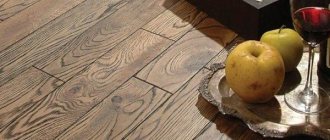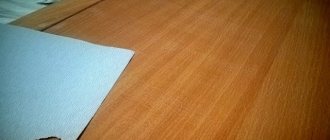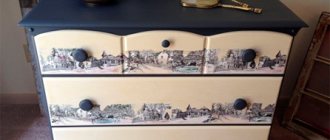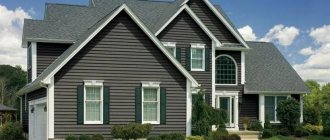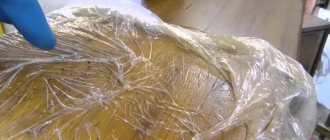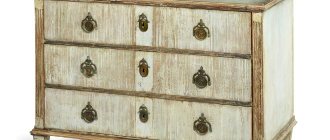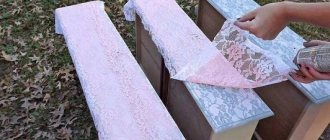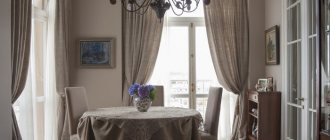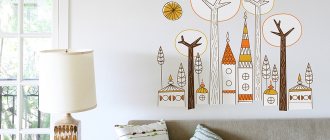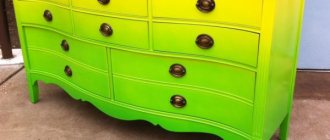"Slobodskoy Les" © 2012-2021.
Wood finishing is in demand today and will remain relevant at all times. Because natural materials have a basic value other than price. Always different, for every taste. As unedged boards to imitate a “careless” rough antique finish.
Finishing with an ordinary unedged board, with the right approach, can effectively change the perception of a home or bathhouse. Specially selected and prepared lumber allows you to decorate the interior space in an original, unique style.
Until people learned to work with unedged boards, finishing was mostly simple. The lack of strict geometry and the presence of a wane was critical for modern residential premises. Low-processed lumber was used for outbuildings, firewood sheds, and wooden sheds. Now the area of application of unedged boards covers the finishing segment.
A characteristic feature of unedged boards is uneven edges of a free cut (in the shape of a tree trunk), uneven “floating” width along the entire length. Due to this, the installation of fragments during finishing serves as an interesting decor with a pronounced individuality. The designs shown are mainly used on the ceiling or wall.
The advantages of the material lie, first of all, in its naturalness and availability if you want to use unedged boards for interior decoration. Fit of elements, direction, location may not be ideal. Greater width + thickness means increased weight. Therefore, unedged boards need reliable installation on a flat base.
A simple finishing material can be easily planed and polished. Only a low grade can become a hindrance: cracks on unedged boards, resin pockets, biological damage, tobacco and fallen knots.
It is better to purchase lumber of natural moisture in advance and keep it under a canopy in gentle conditions (atmospheric drying) for several months before installation. Perform culling.
In addition to grade, there are options for wood species. The house mainly uses pine and spruce. Less commonly, beautiful cedar. Linden, larch in the bathhouse. In any case, an unedged board will need reliable protection with an antiseptic or wood varnish. Choose a good composition. For example, Finnish Tikkurila differs from those made in the Russian Federation.
Long service life, frost resistance of wood, the possibility of use in any climatic zones of the Russian Federation, ease of partial replacement without major rework, make it possible to use wavy edges on the facade of a building. With horizontal installation overlapping or in rows. Thanks to its natural beauty and texture, a simple unedged board will decorate platbands (windows), country furniture, and a fence.
Decorating the inside of the house with unedged boards, lining, imitation timber and other materials can significantly transform the appearance of the walls. In addition, the use of wooden blanks makes it possible to improve the heat and sound insulation of the room, which will have a positive effect on the level of comfort of the residents.
In our article we will tell you what parts can be used for the internal and external cladding of buildings, and also provide an algorithm for installing finishing materials.
The use of natural wood in interior decoration
Material characteristics
Sheathing options
People started using wooden parts for both interior and exterior decoration of their homes a very long time ago. At the same time, technology has constantly developed, because today there are many materials that can be used to solve this problem.
Below we provide brief characteristics of those that are used most often:
- Unedged board - parts obtained by sawing logs into plates without aligning the edges. Despite the rather sloppy appearance, the material can be used for decoration, especially if the entire interior or exterior of the building is stylized as antique (rustic and country styles).
The use of unedged boards in exterior finishing
Advice! Before installation, be sure to clear the unedged board of bark, and then trim off the thin edges to avoid cracking.
- Edged boards are used a little less frequently as a finishing material, but they allow you to create a smooth surface suitable for painting or applying decorative plaster. The main disadvantage of this design is that when drying, the dimensions of the board decrease, and quite large gaps form between the parts.
- Wooden lining, block house and imitation timber are materials that are aimed specifically at covering surfaces. Their design provides for the presence of locks - protrusions and depressions at the ends of the panels, which, when connected, overlap the seams and form an almost airtight connection.
Installation method
Regardless of which board you chose for wall covering, such products are installed according to a similar algorithm. The main difference between the procedures is the need for insulation or waterproofing of wooden parts, as well as in the method of fastening the parts.
The general scheme of work is as follows:
- First, we prepare the base by cleaning it, and then treat it with moisture-proof and antiseptic components.
- Then we install the sheathing on the base - a frame made of beams or a steel profile, to which the sheathing itself will be attached.
Sheathing made of steel profile
- If necessary, we lay insulation between the cells of the sheathing - polystyrene foam, polystyrene, mineral wool, etc.
Note! Cellulose wool can be blown under the boards after they are installed, but then the thermal insulation process must be planned in advance, specifically leaving holes to fill cavities in the frame.
- We lay membrane material on top of the insulation and sheathing, which will protect objects under the sheathing from moisture and condensation.
- We mount the finishing panels, fixing them to the sheathing using glue, self-tapping screws, nails or special clips - clasps.
Key features of wall decoration with boards
Boards for interior wall decoration made from natural material (or based on it) have a number of positive qualities, for example:
- Such interior decorative material for the home as wood can be used in different climatic conditions.
- This opens up the opportunity to create any structural element with your own hands.
- Wooden beams are a natural and environmentally friendly material.
- This type of wall covering does not cause any difficulties during operation.
- This finishing material has a long service life.
- In case of failure of a separate fragment, a partial replacement can be performed.
- Laying technology allows you to additionally insulate or insulate the walls of the building.
- The ability to create a different style, age the canvas or choose the desired texture and shade.
- Affordable price.
Finishing boards made of larchDespite many advantages, facing surfaces with unedged or edged boards also has some disadvantages, namely:
- Due to an increase in the level of humidity in the room or from exposure to moisture, lumber loses its physical qualities.
- Boards without additional treatment with protective agents support combustion.
- This building material has various defects inherent in wood (resin pockets, knots, cracks, etc.).
- At some intervals, the boards require painting or other maintenance.
- Without treatment with antiseptic solutions, fungi and mold can develop on wood.
This choice is determined not only by environmental friendliness, but by physical properties, since wood always has a beautiful appearance, is resistant to mechanical stress, retains heat and makes it possible to partially replace individual planks in case of damage.
The walls are lined with larch clapboard
The main characteristics that always play in favor of wood are:
- high strength;
- high thermal insulation;
- soundproofing;
- ease of use;
- combination with other types of materials.
Of course, the price of this natural product is an order of magnitude higher than its artificial counterparts, but if you line the walls with your own hands without the involvement of specialists, and using inexpensive types of wood products, then its cost is completely justified. Lining can have a convenient fastening, which significantly reduces installation time. Types of finishing wood Lining is a board for finishing walls, which is often made from solid wood, and is characterized by a high degree of strength, speed and ease of installation of the product on a prepared surface.
This material is easily replaceable if damaged, and allows designers to use various tinting agents, apply different varnishes and paints.
The main advantage of this material is its low specific gravity, which makes it possible to use these finishing boards in any construction conditions. Wall decoration with cedar lining. The lining is mounted on a pre-prepared sheathing; the resulting space between the wall to be finished and the lining can be filled with insulation or communication systems can be laid. The material has different physical properties, is made from various types of wood and can be used for both exterior and interior decoration. Board imitating timber Imitation timber is a board for exterior finishing, which, when assembled, creates an imitation of solid timber and gives the structure more solidity. The material also has a high degree of strength, is resistant to mechanical damage and, when treated with special protective agents, becomes resistant to destructive environmental factors.
The material for finishing a house, imitating timber, is very similar to lining and installation follows the same principle. Each board has tongue and groove locks on the longitudinal edges, which greatly facilitates the installation process. This finishing board under the timber is installed on a wooden sheathing on top of the insulation.
Wall decoration with clapboard imitating timber: PhotoBlock-House is another representative of a decorative board, which is designed to imitate a log house made of perfectly smooth rounded logs. The product is available in different thicknesses and widths of the rounded edge, which allows the product to be used both on the outside of the house and for interior decoration. This home exterior board is usually made from pine woods such as spruce or angora pine, which gives the wall more realism and a natural coloration. Block Houses can also be made from larch, aspen, cedar or birch while preserving the natural color of the wood and patterns. The material is divided into two types (“A” and “B”) according to the type of external texture.
Group “A” material has a perfectly smooth surface and is suitable for indoor use.
The material of group “B” has a rougher processing, the external relief is close to real timber and is used for outdoor decorations.
Internal cladding with Block House of group “A”. This is a small decorative board designed for decorating small architectural forms and individual areas indoors. It can also be used for external facades, covering individual parts of the building to make them stand out from the overall picture. Planken is made in the form of a regular board with processed chamfers along the edges of the product. The material itself can have different colors and textures, the chamfers can also have sharp or rounded shapes. Among the characteristics of the material, one can note its resistance to moisture, since it is made mainly from larch and is saturated with a large number of natural resins. When installing the plank, a small gap is left between the boards, since under the influence of temperature and moisture, the plank tends to expand.
Decorating the house with larch planks.
Wood based siding
Siding is a special decorative panels for finishing, which can be made from various natural and synthetic materials. In this case we are talking about panels made from wood chips under high pressure.
Products can have different sizes, colors and textures, imitating all kinds of wood. The material has high strength, is intended for outdoor use with the possibility of laying insulation, and is resistant to moisture and sunlight.
When purchasing siding, its standard package usually includes the necessary fastening parts, instructions for installing the panel and additional elements for hiding seams and cuts. Siding panels, like any other finishing board for exterior finishing, are installed on a pre-prepared sheathing. Covering walls with wood-based siding. An unedged board is a board with raw edges. Decorating the walls with unedged boards gives the building a specific style and, with a good design layout, the effect is very beautiful with a pronounced individuality.
Usually this material is used to make sheathing for the installation of other decorative wood, but recently it has also begun to be used for cladding facades in country houses.
In most cases, finishing of facades with unedged boards is carried out on non-residential outbuildings, garages or gazebos. When the boards are carefully adjusted to each other, one gets the impression that the entire structure is made of wood, and this effect is often used by landscape designers. The facade is covered with unedged boards. In some cases, finishing with unedged boards is done even without cleaning it from tree bark; this is done solely for the purpose of giving the structure a unique style and a certain aged look. Before using this product for exterior finishing, it is necessary to pre-treat it with certain means to protect it from moisture and exposure to ultraviolet rays. Finishing building facades with natural wood or materials based on it has a number of significant advantages, such as:
- use in different climatic zones;
- the ability to create structural elements of any complexity;
- environmental purity and naturalness of the material;
- ease of installation, without special skills;
- long service life with the possibility of repair and partial replacement;
- the possibility of installing additional insulating layers on the walls of the building;
- the possibility of a major reconstruction of the facade without causing damage to the base of the building;
- relatively low cost;
- many options for color and texture solutions.
Exterior decoration of the house with Block House.
Like any other type of material, wall decoration with boards also has its disadvantages:
- with a large amount of moisture, a sharp deterioration in the physical qualities of the material is observed;
- without special treatment, wood supports combustion;
- the presence of knots, resin pockets, cracks and other natural components of wood;
- the need for periodic maintenance and renewal of protective or paint layers;
- development of fungus without pre-treatment with antiseptics.
Conclusion
High-quality processing of wood before its direct use will provide the tree with new physical properties and avoid the manifestation of some of its disadvantages listed above. In general, the use of this natural material always plays into its hands in decorative terms, successfully combining with other types of materials, creating a feeling of comfort, coziness and giving the house a chic, presentable look. This is a simple and inexpensive building material, the characteristic feature of which is not sawn edges, which give design originality and aesthetics of the structure.
Often, when arranging and decorating your home, preference is given to environmentally friendly building materials.
Therefore, cladding with boards or similar materials based on natural wood has gained popularity. Among the positive physical properties of wood, the following should be noted:
- Beautiful view;
- Resistance to mechanical stress;
- High thermal insulation;
- Partial replacement of damaged planks;
- High strength;
- Noise insulation;
- Easy installation and operation;
- Compatibility with other finishing building materials.
There are many ways to remove bark/wane, each of which seems easy and effective to different people.
Finishing the ceiling in a wooden house: unedged and floorboards, lining and plank
A board as a finishing material for the ceiling of a house made of chopped logs can become a real “highlight” of a log house. Ceiling cladding made of boards can be of any kind; let’s look at the most popular types.
There is no specialized board for the ceiling; modern finishing technologies have made great strides forward and any type of board can be mounted on the ceiling - unedged, classic flooring, thermowood boards.
Unedged board - antique finish
An unedged board is obtained by cutting a log lengthwise, the edges are not cut off, so the top and bottom surfaces are smooth, and the edges follow the natural curves of the workpiece. To decorate the ceiling, use an unedged board with barked and unbarked edges.
Stages of preparing unedged boards
- Logs of natural moisture are used to make boards 25 mm thick;
- If you decide to use a debarked board, then manually remove the bark from the edges using a scraper or a landing stage;
- The cleaned workpieces are stacked to dry in natural conditions;
- The required number of boards for cladding the ceiling are processed on a planing machine, after which they are carefully sanded;
- After installation, the boards are cleaned and treated with protective compounds.
An unedged board is indispensable when implementing a design project in any ethnic style.
Country and Russian, rustic and chalet, the “antique” concept – a ceiling made of uncut boards is appropriate everywhere.
The boards are stuffed in two layers so that the gaps in the first row are covered with the sheathing from the second. Beams in such an authentic interior are most often made from untreated logs or rough-hewn beams.
The cost of unedged boards for finishing the ceiling
The cost of unedged boards made from coniferous wood is less than from “durable” deciduous trees (for example, oak). Also, the price depends on the type of lumber, of which according to GOST 5. On average, the cost of 1 m3 of unedged boards is from 2 thousand rubles. up to 5 thousand rubles
Lining
Lining is a classic for the ceiling in a house made of chopped logs. Lining comes in several categories; the “extra” class material includes lumber of excellent quality. Such lining costs a lot, but the ceiling finish is very smooth, without flaws.
A tongue-and-groove board is lumber with a tongue-and-groove fastening, which is called “tongue and tongue.” When installing such cladding, there are practically no gaps left; if there are any, they are formed due to the profile.
You can diversify the appearance of a ceiling trimmed with clapboard using the following techniques:
- Partial ceiling finishing;
- Installation of lining in different directions;
- The use of two or more types of lining of different colors;
- Installation of decorative beams.
What kind of material: its advantages and disadvantages
A board that has a raw edge, and even the remains of bark, is called unedged. The cost of such material is lower than fully processed and polished. But modern designers have found use for this type of wood. Now it is fashionable to use unedged boards for cladding the facade of a house.
Correctly fitted elements create an imitation of a house built entirely from wood material. Even the raw edge gives it an original and slightly rough but natural look. Like processed boards, unedged boards have a set of positive and negative characteristics.
Let's look at the advantages first:
- Environmentally friendly - the material is absolutely safe for human health and the environment.
- Vapor permeability - wood allows vapor to pass from the interior to the outside, which allows you to create an ideal microclimate in the living rooms of the building.
- Thermal insulation and sound insulation properties.
- Simple and quick installation without the use of complex technologies and tools.
- Possibility of partial reconstruction if a small area is damaged.
- Attractive appearance.
- A variety of textures, which depends only on the type of wood.
- You can sheathe a structure of any geometric shape.
- Possibility to combine with other facing materials.
Now let's look at the disadvantages:
- the need to use protective impregnations;
- regular renewal of protective layers;
- without protection the service life is short;
- quickly damaged by fungus, mold, insects and rodents;
- easily ignites and sustains combustion.

